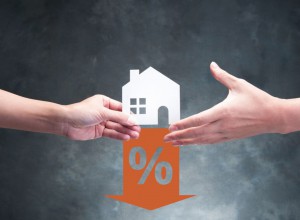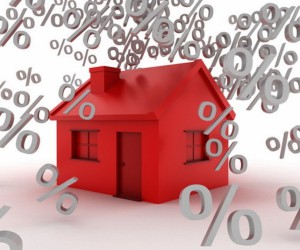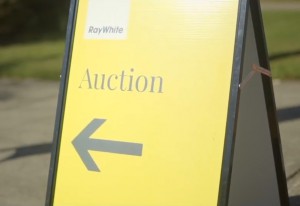There are more interesting articles, commentaries and analyst reports on the Web every week than anyone could read in a month.
Each Saturday morning I like to share some of the ones I’ve read during the week.
The weekend will be over before you know it, so enjoy some weekend reading.
Who loses out most when interest rates are cut?
Following another interest rate cute in July the question remains – who are the winners and losers?
An article on Domain.com.au looks at who is losing out.
The Reserve Bank’s two successive interest rate cuts in June and July this year to a record low of 1 per cent are aimed at stimulating the economy and creating more jobs but, at the same time, have severely disadvantaged some people.
So who are the five biggest losers from the changes? 
Savers
At a time when so many people are in so much debt — adding up to a record $2.3 trillion in Australia according to ASIC — savers are big winners. So by the same measure, savers, earning pitiable interest on both standard savings accounts and term deposits, are now doing it tough.
“In aggregate, household debt as a whole is about double the size of interest-bearing assets,” says Matthew Hassan, Westpac senior economist. “But that’s very cold comfort for savers!”
There’s about $526 billion currently sitting in savings accounts across Australia, on figures from financial comparison website Finder. If the banks pass on the full rate cut, those savers could lose about $1.3 billion in interest.
“The smaller online-only banks offer better rates of interest, or savers could go to higher risk, higher returns options,” says Graham Cooke, Finder’s insights manager. “But savers are very much caught between a rock and a hard place at the moment.”
First-home buyers may already be struggling to raise enough money for a deposit, and the rate cuts will make that task even harder.
The sums they’ve managed to accrue so far will be earning negligible interest.
Many deposit account rates have fallen even below inflation in relation to both term deposits and saving accounts, says Sally Tindall, RateCity research director. “Average savings account rates today are around 1.36 per cent, but will fall further as most banks are yet to pass on the July cut,” she says.
In addition, for people hoping to enter the property market, the competitors for the homes for sale are able to borrow more and pay less interest on the loans. As a result, many more may well come into the market, forcing property prices back up.
In addition, if the economy does indeed pick up as a consequence of the rate cuts, prices could rise even more quickly.
Retirees
For retirees, hiding cash under the mattress might never before have looked such an attractive option.
Those depending on living off the interest on their nest eggs may find that the new low rates could well be swallowed up by bank charges anyway.
“For retirees, it is difficult to get a decent return on savings,” says Cooke. 
“Traditional-type savings accounts where you put money in and take it out as needed now pay a really low rate of around 0.3 per cent, which is almost nothing.
Now we’re finding banks are pushing ‘bonus’ accounts with restrictions on withdrawals instead.”
In addition, the current deeming rules — now under review by the Government — are further disadvantaging pensioners.
It assumes money invested in financial assets is earning a particular amount of income regardless of the actual return and, while the rates originally were well below the Reserve Bank’s cash rate, now both the lower and higher rates are above it for the first time ever.
Peter Martin, visiting fellow at ANU’s Crawford School of Public Policy, says: “As interest rates have come down over the past four years, the rate that retirees are deemed to have earned for the purpose of the pension income test hasn’t budged, meaning that although retirees have been earning less, in some cases a good deal less, they haven’t been getting more access to the pension …
“The high deeming rates have meant applicants have been means tested on income they haven’t received.”
Mortgage-holders on fixed rates 
People who opted for fixed rates, not believing that interest rates would fall further, can only look on in envy as those on variable rates see the cost of their mortgage being slashed.
About 15 per cent of people signing up for next loans in the last three years opted for a fixed rate, says Ms Tindall.
“Of course, it depends on when they fixed, and at what rate they fixed,” she says.
The banks
There aren’t many of us who’ll feel too sorry about banks seeing their profits tumble on having to manage on low mortgage rates.
But then again, a strong banking sector is the mainstay of any good economic recovery.
Read the full article here
Out of stock
Results show a low volume of property stock.
This Blog by Pete Wargen shows the statistics.
Listings well down
The cobweb model in action.
New property listings are down 32 per cent in Sydney and 32 per cent in Melbourne respectively from a year earlier.
Brisbane’s new listings are down 22 per cent, and in Perth the equivalent figure is 18 per cent.
Even the total of unsold inventory is now down by 10 per cent in Sydney, and 6 per cent in Perth.

Source: CoreLogic
There remains a big chunk of unsold inventory in in south western Sydney and in the Hills District.
But stock levels are becoming very tight on the lower north shore and on the northern beaches.
Read the full article here
Property auctions are selling at rates not seen in more than 12 months as Sydney and Melbourne recovery continues
Things are looking up for our auction market.
According to an article on Business Insider auction sales in Sydney and Melbourne are at a 12 month high.
Falling property markets in Sydney and Melbourne may have finally bottomed out, with auctions selling strongly for the fourth consecutive week.
Take Sydney for example.
On the same weekend last year, less than half of all homes (46.9%) that went to auction managed to sell.
This year, more than three quarters (77.2%) sold, according to figures from property market researcher CoreLogic.
While not quite as large, Melbourne’s auction figures have impressed too, with 73.6% of homes selling compared to 56.2% last year.
 Preliminary clearance rates over the weekend (CoreLogic)
Preliminary clearance rates over the weekend (CoreLogic)
Those preliminary numbers are expected to fall slightly but prove a marked improvement in the last 12 months, and helped drive the national figure to a solid 69%. 
The strength of those numbers has been credited to a federal election result that nullified proposed changes to negative gearing, two consecutive RBA interest rate cuts, and loosening of lending restrictions.
“The trend now is very clear with interim results in the 60s and 70s in the past four weeks and final clearance rates above 60 per cent for that period.
This is significantly higher than the clearance rate of 52 per cent a year ago,” RiskWise Property Research CEO Doron Peleg said in a statement provided to Business Insider Australia.
While clearance rates prove strong, volumes remain low even by winter’s standards, with 324 fewer properties (27.5% less), going to auction than last year.
 Nationally, auction clearance rates are trending up after a twelve-month decline (CoreLogic)
Nationally, auction clearance rates are trending up after a twelve-month decline (CoreLogic)
That could turnaround as optimism returns to the market in spring, with clearance rates tending to lead volumes higher or lower.
“However, further improvement in auction results and the turnaround in the market are likely to lead to an increased volume as sellers expect stronger demand for their properties and, therefore, are more confident to put them on the market,”
Read the full article here
East coast suburbs are hip
It would seem all roads are pointing east.

In this article for Switzer, John McGrath looks at recent results indicating a rise of the eastern suburbs.
A new report from CoreLogic and Moody’s Analytics paints a picture of recovery and modest growth for the East Coast capitals in 2020.
The report predicts that the Australian property market will trough this quarter following two years of decline, with greater falls in house prices (-11% down from the mid-2017 peak) compared to apartment prices (almost -7% down from the peak).
TheCoreLogic-Moody’s Analytics Australia Home Value Index Forecast, released in late June, expects a return to gradual growth in 2020, powered by interest rate cuts and some relaxation in lending rules recently announced by APRA.
Moody’s Analytics has developed an econometric model that enables price predictions for individual regions within a city.
So, let’s take a look at what they predict for the three East Coast capitals overall and within their main precincts.
Sydney

Moody’s says Sydney’s correction is on track to be the longest and steepest on record but at the end of the day, house prices are still around +60% higher than they were in 2012.
Sydney’s house values declined -5.5% in 2018 and are forecast to fall a further -9.6% in 2019, before a +3.1% bounceback in 2020 and +4.8% in 2021.
Apartment values dropped -3.1% in 2018 and are set to decline by -7.3% for 2019, before a +4% rise in 2020 and +6% in 2021.
House prices
– Baulkham Hills/Hawkesbury +6.6% in 2020, +8.7% in 2021
– Blacktown +6.2% in 2020, +7.3% in 2021
– City & Inner South +7.8% in 2020, +2.2% in 2021
– Eastern Suburbs -2.1% in 2020, +0.5% in 2021
– Inner South West +0.9% in 2020, +5.7% in 2021
– Inner West +3.8% in 2020, -0.2% in 2021
– North Sydney-Hornsby -0.4% in 2020, +1.6% in 2021
– Northern Beaches +2.6% in 2020, +8.2% in 2021
– Outer South West +2.3% in 2020, +5.8% in 2021
– Parramatta +3.2% in 2020, +5% in 2021
– Ryde +1.1% in 2020, +7% in 2021
– South-West +3.7% in 2020, +4.7% in 2021
– Sutherland +6.5% in 2020, +9.4% in 2021
– Outer West/Blue Mountains +1.7% in 2020, +3.7% in 2021
– Central Coast +4.1% in 2020, +5.5% in 2021
Apartment prices
– Baulkham Hills/Hawkesbury +3.5% in 2020, +6% in 2021
– Blacktown +3.6% in 2020, +5.8% in 2021
– City & Inner South +3. % in 2020, +3% in 2021
– Eastern Suburbs -2.7% in 2020, -3.5% in 2021
– Inner South West +2.4% in 2020, +5.6% in 2021
– Inner West +5.9% in 2020, +7.7% in 2021
– North Sydney-Hornsby -1.1% in 2020, +0.9% in 2021
– Northern Beaches +6.6% in 2020, +4.2% in 2021
– Outer South West +5% in 2020, +9% in 2021
– Parramatta +6.6% in 2020, +7.9% in 2021
– Ryde +2.2% in 2020, +5.1% in 2021
– South-West +5.5% in 2020, +7.7% in 2021
– Sutherland +2.1% in 2020, +4% in 2021
– Outer West/Blue Mountains +1.9% in 2020, +7.1% in 2021
– Central Coast +13.1% in 2020, +13.8% in 2021
Melbourne
Melbourne house values are -14% below their peak after an 18-month decline. 
The fall in values has been most pronounced in the inner suburbs but the worst appears to be over already with a modest recovery expected in 2020.
Melbourne’s house values declined -0.3% in 2018 followed by a sharp fall this year projected to total -10.8%.
The recovery will begin very slowly in 2020 with just a +1.3% increase followed by a better result in 2021 at +6%.
The decline in apartment values has been less pronounced with a +1.8% gain in 2018 and a decline this year projected at -3.9%.
There will be a further decline in 2020 at -0.3% followed by a +1% improvement in 2021.
House prices
– Inner Melbourne +1.3% in 2020, +3.4% in 2021
– Inner East +5.5% in 2020, +7.7% in 2021
– Inner South -0.8% in 2020, +6.7% in 2021
– North East +6.2% in 2020, +11.8% in 2021
– North West 0% in 2020, +4.3% in 2021
– Outer East -1.9% in 2020, +8.1% in 2021
– South East +0.8% in 2020, +5.5% in 2021
– West -0.6% in 2020, +2.8% in 2021
– Mornington Peninsula +2.5% in 2020, +5.2% in 2021
Apartment prices
– Inner Melbourne +4.2% in 2020, +3.8% in 2021
– Inner East +6.8% in 2020, +9.8% in 2021
– Inner South -0.1% in 2020, +0.2% in 2021
– North East +1.4% in 2020, +3.7% in 2021
– North West +5.2% in 2020, +4.3% in 2021
– Outer East +0.3% in 2020, +3.8% in 2021
– South East -6.1% in 2020, -2.5% in 2021
– West -6% in 2020, -7.1% in 2021
– Mornington Peninsula -0.5% in 2020, +3.1% in 2021
Brisbane
Brisbane experienced strong growth between 2012-2018 and corrected this year. 
House prices went up +1.5% in 2018 but lost those gains and will lose a bit more this year for a total projected decline of -1.8%.
The years ahead look a bit better with +1.4% growth in 2020 and +2.9% in 2021.
Apartment values dipped -1% in 2018 and will finish 2019 down about -0.7%.
The future looks much brighter with predictions of +5.6% growth in 2020 and +5.8% in 2021.
House prices
– Brisbane East +1% in 2020, +1.2% in 2021
– Brisbane North +1.4% in 2020, +0.4% in 2021
– Brisbane South -0.8% in 2020, +2% in 2021
– Brisbane West +1.5% in 2020, +4.2% in 2021
– Brisbane Inner City +2% in 2020, +1.9% in 2021
Apartment prices
– Brisbane East +3.3% in 2020, +3.7% in 2021
– Brisbane North +5.3% in 2020, +5% in 2021
– Brisbane South +4.1% in 2020, +5% in 2021
– Brisbane West +4.6% in 2020, +3.6% in 2021
– Brisbane Inner City +3.9% in 2020, +5.4% in 2021
Source: CoreLogic-Moody’s Analytics Australia Home Value Index Forecast, Second-Quarter 2019 Housing Forecast Report, published June 25, 2019
If you’re a buyer hoping to take advantage of the bottom and buy as low as possible, now is the time in most city markets.
Read the full article here
What your coffee says about you
Are you a latter drinker? Or more of a long black fan?
Your coffee selection says a lot about your personality.
This article from News.com.au looks at what your coffee type says about you.
THIS is what baristas think when you order your coffee.
Be warned chai latte drinkers, this won’t end well for you. 
Australians love good coffee. Fact.
The cafe culture in Australia is only growing as is our consumption of coffee.
According to Roy Morgan Research Australian adults drink 9.2 cups per week.
Coffee has even taken on a life of its own with the birth of “Coffee in a Cone”which is exactly how it sounds, coffee poured into a chocolate-lined wafer cone.
We also have Rainbow coffee where baristas add food colouring to steamed milk in order to create the dreamy designs.
So in honour of our continued love affair with good coffee we spoke to Lavazza Australia Espresso Specialist John Kozsik about what Australians drink and what it says about them.
Here is what he had to say:
Cafe Latte
Latte lovers are softer, more romantic hard workers. Generally nice people. They can be an average Joe coffee drinker, creatures of habit. They don’t like surprises and stick to daily routines — breakfast, coffee, work, lunch, work, coffee, work, gym, dinner, repeat!
Long Black 
A strong, busy on-the-go person with stamina. On the flip side, they do however also enjoy long walks on the beach, solo time, listening to instrumental mood music over a candlelight dinner, and flicking through the weekend paper.
Cappuccino
Chocolate dusting on top means cappuccino drinkers can be indulgent. This self indulgence tends to mean they can also have a tendency to transform into hardcore party animals (too many espresso martinis), on a mission to wreak havoc worthy of the 6 o’clock news, or die trying. Risk takers, those who like to live life on the edge.
Affogato
Want all that life has for them and don’t care what others may say. Not generally hardcore coffee enthusiasts but soccer mums, IT helpdesk workers or instant coffee drinkers wanting to join the espresso club. Also, these people are usually big fans of espresso martinis. Fun loving and love cuddles.
Short Black
The purist. Straight to business. Cultured coffee enthusiasts busy building the world around them, love attention to detail. Baristas usually rate these people highly at first, but quickly loose respect when sugar is added to the coffee.
Macchiato
Little to no fear of failure. Macchiato lovers are often one sip away from greatness or complete failure, such is the life of the Macchiato lover.
Piccolo Latte
Often found eating smashed avocado, piccolo latte drinkers are both health conscious and like good things in small packages. More than likely to own a Dachshund and desperately trying not to over compensate.
Vienna
Usually favoured by the newly divorced or retired professional sports athlete, the Vienna offers the hard hit of caffeine with a soft and fluffy texture of whipped cream which the drinker identifies with. The drinker may also look soft and fluffy.
Hot Mocha
Sweet and innocent, the Mocha lover prefers nothing more than cuddles on the couch with their significant other on a Saturday night watching their favourite rom com, usually starring Richard Gere or Hugh Grant. They have strong opinions on whether the addition of marshmallows is necessary.
Hot Chocolate
Reminiscent and holding a dear sense of nostalgia for their childhood, hot chocolate lovers can generally be found binge watching their favourite cartoon with a giant mug of the stuff. Often hold a high power job, but always searching for a sense of escape.
Chai Latte
Growing up, my mother told me if I don’t have anything nice to say, don’t say nothing at all.
Caramel Latte
Often mistaken for a coffee expert, the caramel latte drinker often tells friends how much of a ‘coffee’ expert they are, rating cafes harsher than Gordon Ramsay. They should do everyone a favour and just get a milkshake.
Tea
Generally a Monarchist, tea drinkers enjoy whining about the cold weather while clutching a streaming cup in both hands. They can often be found on the couch watching re-runs of Heartbeat or Mrs. Brown’s Boys.
Ristretto
Respect. ‘Nuff said.
Iced Coffee
The Iced Coffee drinker is good with their hands and is more often than not, a tradie. The iced coffee lover often pairs the chilled caffeinated beverage with some form of meat and pastry, such as sausage roll or meat pie, and in most cases are purchased before 10am.
Read the full article here
Weekend video: Should you trust your first impression?
Read more: propertyupdate.com.au


